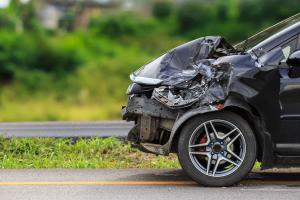Why Timing Matters in Collision Repair: The Impact of Delayed Action on Cost and Results
The longer damaged areas remain exposed, the more underlying issues develop. ”
BATON ROUGE, LA, UNITED STATES, November 21, 2025 /EINPresswire.com/ -- After a vehicle accident, the condition of the damaged areas begins changing almost immediately. Metal shifts, paint oxidizes, moisture enters exposed sections, and mechanical components may deteriorate from underlying stress. The length of time between the accident and the repair process plays a critical role in determining final costs, structural stability, and long-term results.— Marcus Toussaint
Collision repair professionals across Louisiana continue to see the consequences of delayed action, ranging from avoidable corrosion to deeper structural damage. Understanding how timing influences repair outcomes helps ensure damaged vehicles remain safe, functional, and financially manageable.
Marcus Toussaint, owner of Toussaint Customs in Baton Rouge, Louisiana, regularly evaluates accident-related damage.
“The longer damaged areas remain exposed, the more underlying issues develop. Early evaluation prevents small problems from becoming major structural concerns,” Toussaint states.
Damage Progresses Over Time
Immediately after a collision, the most visible issues usually involve dents, bent panels, paint scratches, or misaligned body components. Beneath the surface, however, more complex problems often begin forming.
As time passes, the following issues may develop:
Moisture intrusion in cracked paint
Rust forming on exposed metal
Misaligned panels shifting further
Loose parts weakening surrounding components
Stress fractures expanding with vibration
Electrical issues worsening from exposed wiring
These changes occur gradually but consistently. Waiting to begin repairs can turn a straightforward job into a more extensive procedure.
Paint Damage and the Risk of Corrosion
Cracked or chipped paint exposes bare metal directly to air and moisture. In Louisiana’s humid climate, oxidation begins quickly. Once rust forms, it spreads across the surface and into seams.
Rust removal requires additional labor, sanding, treatment, and refinishing. In advanced cases, entire sections may need replacement. Addressing paint damage early prevents unnecessary deterioration and preserves structural integrity.
Hidden Structural Problems Become More Severe
Even minor collisions can create small structural shifts. A vehicle that appears drivable may still have:
Frame misalignment
Bent brackets
weakened welds
Suspension strain
Impact stress near mounting points
These issues can worsen as the vehicle continues to be driven. Normal road vibrations amplify small misalignments. Over time, this increases repair complexity and can create secondary mechanical problems that were not present initially.
Moisture, Weather, and Environmental Factors
Louisiana’s climate accelerates damage progression. High humidity, frequent rainfall, and high temperatures contribute to:
Faster metal corrosion
Mold growth in damp interior areas
Warping of exposed components
Breakdown of adhesives and seals
Vehicles left outside after an accident experience significantly more deterioration than those repaired promptly or stored indoors.
Higher Repair Costs With Longer Delays
Repair cost increases correlate strongly with the amount of time between the accident and the repair. As damage spreads, repairs require:
More labor hours
Additional parts
Expanded refinishing
Replacement rather than repair of certain components
Simple dent work or refinishing can evolve into panel replacement, structural straightening, or mechanical correction. That progression results in higher total costs and longer repair times.
Insurance Considerations
Insurance companies often encourage quick reporting and timely repair plans. Delayed action can create documentation issues, unclear accident timelines, or disputes regarding secondary damage not directly caused by the collision.
Timely assessments provide:
Accurate documentation
Clear estimates
More predictable claims processes
Early evaluation ensures the repairs reflect accident-related issues rather than damage resulting from prolonged exposure.
Mechanical Systems Can Decline After Impact
Impact forces travel through multiple sections of the vehicle. Even when the engine, transmission, and suspension appear to function normally, damage may exist internally. Waiting too long may allow weakened parts to fail unexpectedly.
Examples include:
Radiator leaks worsening over time
Wheel bearings failing from impact stress
Sensors malfunctioning after delayed exposure
Bent suspension components affecting alignment
Addressing mechanical issues early supports long-term safety and vehicle reliability.
Alignment, Tires, and Long-Term Wear
Misalignment after an accident may seem minor initially. However, continued driving on a misaligned frame or suspension setup causes premature tire wear. Tires can become uneven, unsafe, and expensive to replace. Delayed action also increases stress on steering systems, ball joints, and control arms.
Faster Repairs Produce More Accurate Results
When damage is evaluated shortly after the incident:
Parts remain in closer-to-original positions
Alignment data is easier to interpret
Panels are more likely to be repairable
Vehicle systems respond more predictably
The sooner the repair begins, the closer the final result remains to factory condition.
Marcus Toussaint emphasizes this:
“Collision damage tells a clearer story when assessed early. Repairs become more efficient, accurate, and cost-effective when done before exposure creates new complications,” he explains.
Conclusion
Timing plays a significant role in collision repair outcomes. Delayed action increases cost, reduces repair accuracy, and heightens the risk of structural and mechanical issues that extend beyond the original accident.
By addressing damage early, vehicle owners limit deterioration, protect long-term value, and support safer driving conditions. In regions like Baton Rouge—where weather patterns accelerate corrosion—prompt evaluation becomes even more important.
Through timely assessments and informed repair planning, damaged vehicles receive the attention needed to restore safety, performance, and structural stability.
Morgan Thomas
Rhino Digital, LLC
+1 504-875-5036
email us here
Visit us on social media:
Facebook
Legal Disclaimer:
EIN Presswire provides this news content "as is" without warranty of any kind. We do not accept any responsibility or liability for the accuracy, content, images, videos, licenses, completeness, legality, or reliability of the information contained in this article. If you have any complaints or copyright issues related to this article, kindly contact the author above.


